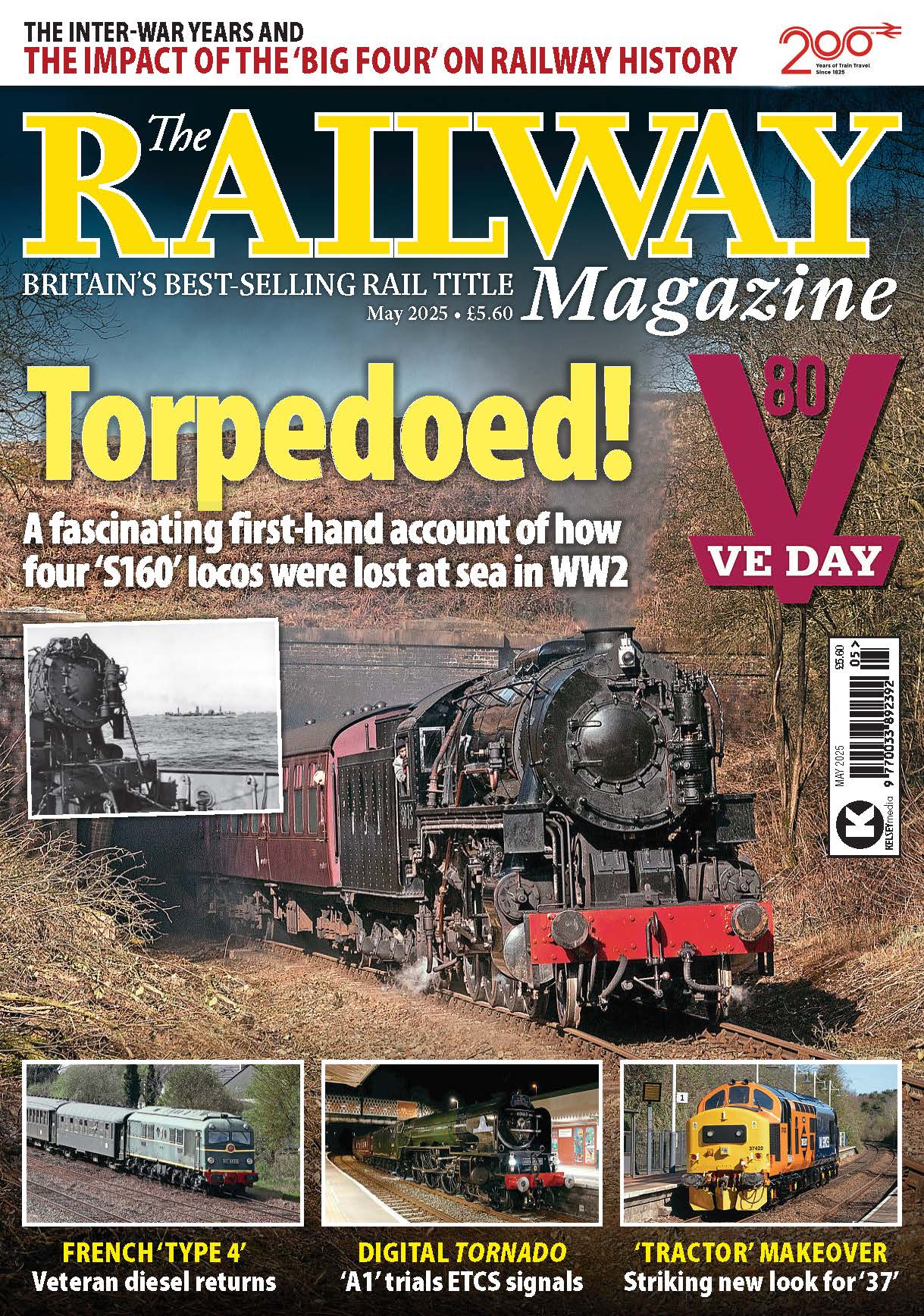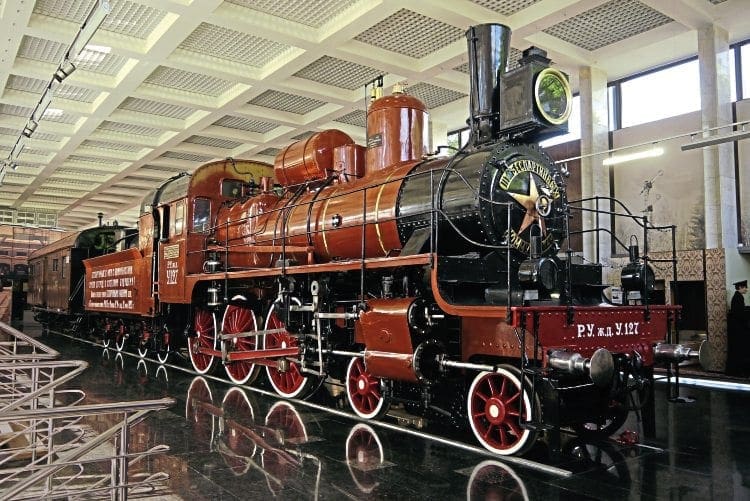
A century ago this April, revolutionary politician Lenin embarked on a circuitous eight-day rail journey from Switzerland to Russia. Allan George and The Railway Magazine recall the remarkable tale.
One hundred years ago, the most momentous railway journey of the 20th century began in Switzerland and ended at the Finland station in St Petersburg – it changed the world, and its revolutionary reverberations continue today.
The 2,000 mile-long rail journey carried the exiled Bolshevik agitator Vladimir Ilych Lenin from the poverty of a one-room flat in Switzerland to become leader of 160 million Russians.
Monthly Subscription: Enjoy more Railway Magazine reading each month with free delivery to you door, and access to over 100 years in the archive, all for just £5.35 per month.
Click here to subscribe & save
Eight days after his departure from Zürich on April 9, 1917, he arrived in St Petersburg, took grip of a stuttering insurrection, and transformed it into a full-blown revolution. It took Russia out of the First World War and started the Communist regime, which lasted until 1990, and cost millions of lives. The religion-like Marxist doctrine underpinning the Revolution spread to many other countries and in some still exists today.
Russia was allied to France and Great Britain, which were fighting the Central Powers of Germany, Austro-Hungary and Turkey, but in this third year of the Great War there was a sort of bloody stasis on both the Western and Eastern Fronts.
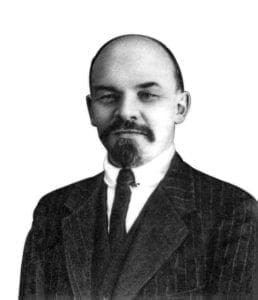
However, the war not going well for Germany. On the Western Front its army’s fighting strength was ebbing away while that of the Allies was growing, as the USA had become involved, and its soldiers were beginning to arrive in France. The German population was starving as a result of the Royal Navy’s blockade, and because of the large numbers of agricultural workers serving in the army.
Germany had to do something to bring the war to an end, and do it fast. Facing possible disaster, its political leadership resorted to an extra-military conspiracy to undermine the Allied effort. The endemic unrest and instability in Imperial Russia provided the best opportunity.
The exiled Russian agitator Lenin, with his wife Nadezhda Krupskaya, had lived in Switzerland since 1900. Here, he had assumed leadership of the Bolshevik faction of the Russian Socialists, preaching the overthrow of capitalism through class warfare, and campaigning for the war to be transformed into a proletarian revolution. Early in 1917 large scale protests in Petrograd (St Petersburg), then the capital of Imperial Russia, deposed Tsar Nicholas II. Lenin was like a caged wolf in his anxiety to get to
St Petersburg because he saw this as the first stage of the revolution
But how was he to get back to Russia and seize power from the political moderates of the Provisional Government? The most direct route through Germany was obviously barred to enemy aliens. So it would have to be through France and Great Britain, and then by sea to northern Russia.
However, the British refused to help, aware that Lenin would try to undermine their Russian ally.
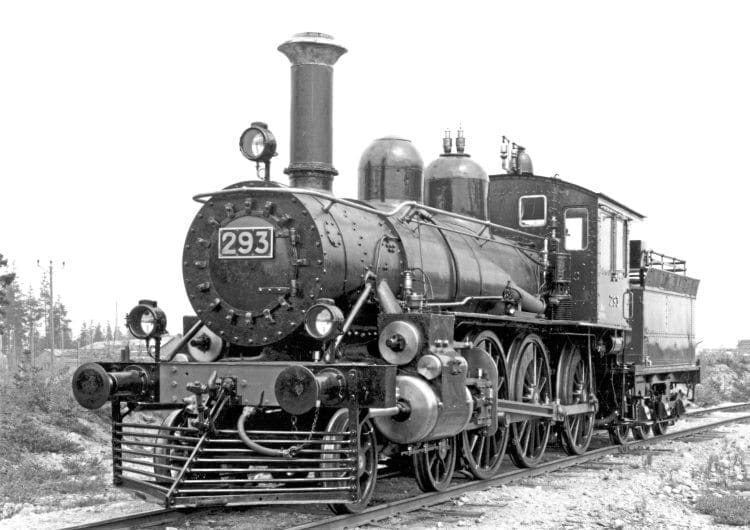
The Sealed Train
Negotiations were put in hand with the Germans through shadowy intermediaries, men who made fortunes through black market trading between the hostile powers. The Germans saw this approach as a heaven-sent opportunity to create chaos in Russia and arranged for a special train to take Lenin from the Swiss border across Germany to Sassnitz, the ferry port for neutral Sweden.
For both parties it was doing a deal with the devil.
Even Lenin’s burning fretfulness to get to St Petersburg did not blind him to the immense dangers of accepting help from the enemy. He would be committing treason which might be seen by Russians, particularly soldiers at the Front, as benefiting the enemy, and that would spell the end of his revolution.
His device to overcome the peril was to demand the train be sealed and have the extraterritorial status of a foreign embassy, without contact with the enemy. In practice the ‘sealing’ of the train amounted to locking the doors of the compartments carrying the Russians.
Even so this did brew up a storm of protest from the Russian people when they eventually realised what had happened, and to make matters worse Lenin accepted, through shadowy black market traders, the ‘Kaiser’s millions’ – 40 million marks – a colossal sum of money to fund his revolution.
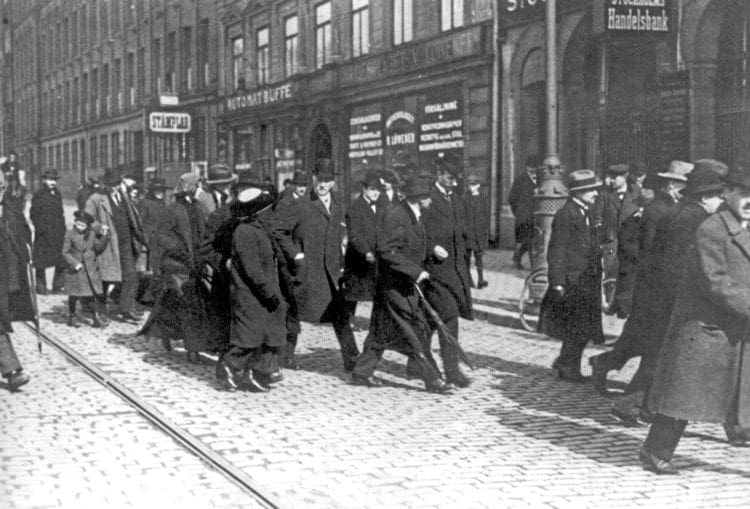
The journey: Switzerland to Frankfurt
Lenin, with his wife and a party of about 40 Russian Bolshevik exiles, boarded an ordinary Swiss service train at Zürich for the border crossing at Singen. Accompanying them was Fritz Platten, a Swiss communist, who would act as Lenin’s go-between with the German authorities, in particular the two Army officers who travelled on the train with them in Germany.
Internally, Germany was a hotch potch of small kingdoms, principalities, other states and political entities. The journey through enemy territory would pass through four different state railway systems. The sealed carriage was attached to various timetabled trains, with engines being changed at each state’s border.
The train’s circuitous route had been planned carefully not to impede military traffic, and as a result passed through a number of different states, each having its own railway network, and hauled by the different passenger locomotives they used.
At Singen, a small town, in the state of Baden Württemberg, the party left the Swiss train and transferred to the green single carriage which made up their train. It had eight compartments, three Second Class and five Third Class with wooden seats, plus space for baggage and toilets at either end.
The German officers occupied a Third Class compartment at one end – beyond a chalk line, which marked the end of the extraterritorial limit. As soon as the party was established on the train it was shunted into a siding for the night.
Early the next morning, the carriage was connected to a train which took them out of Singen on the line towards Radolfzell, north east to Ulm, and then north-west on the branch to Stuttgart.
Sleepily, the passengers stared at meadows, small woods, and pretty villages, each clustering around a church, as the train climbed steadily into the Swabian Alps. Running north the line traced the Neckar Valley for a while and eventually the train ran into Tuttlingen, where the engine was changed for the line to Stuttgart.
Continuing to follow the Neckar it ran through fields deserted of workers, most of whom had been conscripted, such was the impact of the war.
Stuttgart was the first major station where they stopped, although none of the Russians were allowed to leave the carriage, not even to stretch their legs.
The train steamed onwards towards Karlsruhe, stopping at Bretten to change engines, then on through the city and across flat open countryside to Mannheim, where it crossed the Rhine, before stopping at the city’s main station. Here, the locomotive was changed again, for the run towards Frankfurt.
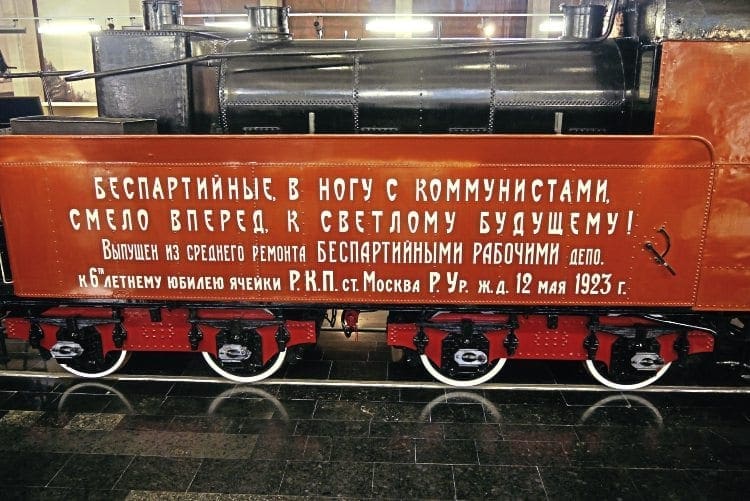
Frankfurt to Berlin
The train ground to a halt in Frankfurt Hbf during the evening rush hour, its platforms thronged with homeward-bound commuters and soldiers. As soon as the identity of Lenin’s party became known, the train was mobbed by soldiers eagerly asking when there would be peace.
The journey to Frankfurt had taken longer than scheduled and the train which was to haul them to Berlin had already departed, so the carriage was shunted into a siding to await the next connection early the following morning.
It was hoped that time could be made up to meet the ferry connection from Sassnitz to Sweden, and thus the train was given priority over other traffic, even the train of the Crown Prince was held up for it – a nice irony. Even so it was soon evident that the planned ferry’s sailing would be missed.
Entering Berlin from the garrison town of Potsdam to the south-west, the train was taken around the capital by a circuitous route to Stettin station, the terminus for the line to Sassnitz, on the North Prussian Railway. As the ferry connection had been missed there was no urgency to press on, and the train was left in a siding near the station for 20 hours.
German Foreign Office records are apparently teasingly vague about this time in Berlin, and there was a suggestion of a meeting between top officials, possibly even Arthur Zimmerman, the Foreign Minister, and Lenin. Zimmerman was one of the moving forces behind the policy to undermine the Russian war effort through causing chaos, and possibly it was he who gave permission for the sealed carriage journey. There has been speculation that if such a meeting took place, the subject of the massive German financial support was discussed and details agreed, but that is conjecture.
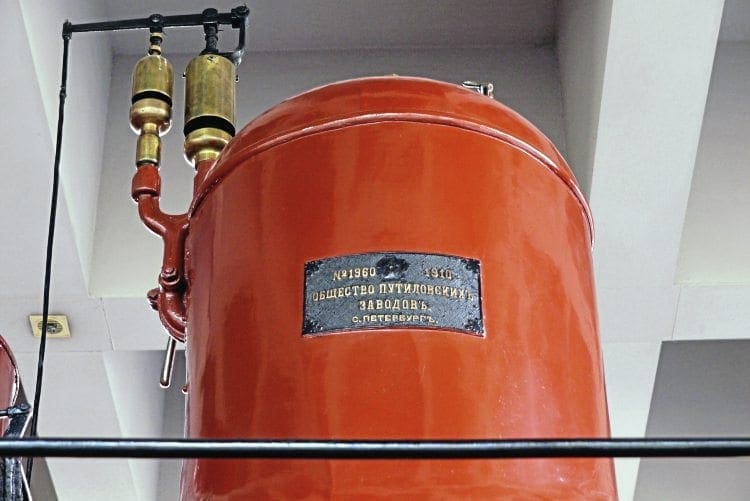
Berlin to the Baltic
Leaving Berlin the train steamed north from Stettin station to the island of Rügen, linked by a bridge to the mainland, then on to Sassnitz to board the ferry Queen Victoria for the four-hour crossing to Trelleborg in neutral Sweden.
It has been impossible to discover details of the numerous locomotives which hauled the ‘sealed train’ through Germany, especially as the train passed on several state railway systems. Quite possibly records were not kept, and even if they had been, they may well have not survived the political upheaval in Germany in the 1920s or the devastation of the Second World War.
Similarly, it has proved frustratingly difficult to uncover photographs of the actual train, again this may be a result of Lenin’s insistence on its extraterritorial status.
While it is pure speculation, it is more than possible that at least one of the trains in Germany was hauled by a Prussian Class ‘P8’ locomotive, of which more than 3,500 were built at Berliner Maschinenbau and other factories, from 1906. Engines of this very successful class were employed by most of the various state railways in Germany. These 4-6-0 locomotives were capable of handling 14-coach trains at speeds in excess of 65mph. Examples remained in service until 1974.
There are at least 10 ‘P8s’ still in existence in museums in Germany, Belgium, Poland, several of them capable of being steamed.
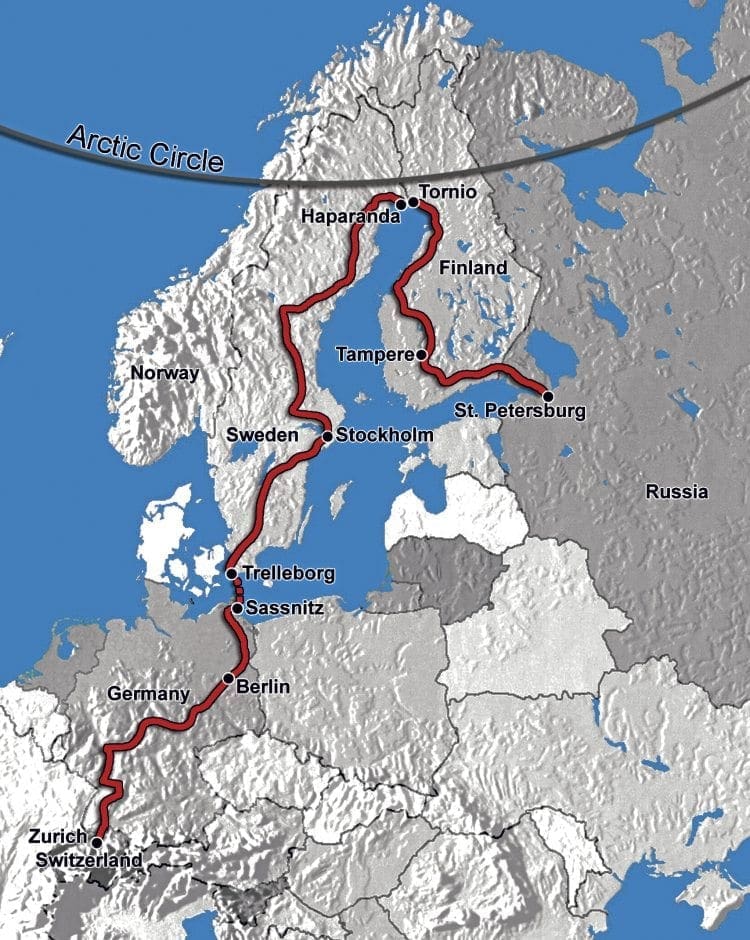
Sweden
The sea crossing was rough and even though the voyage was relatively short, some of the party were uncomfortable. A quayside welcome awaited the party from Swedish socialists and the Mayor of Trelleborg, however little time could be spared for niceties as the ordinary service train for Malmö, their next stop, was due to depart in just 15 minutes.
Now he was in a non-belligerent country, Lenin no longer needed a sealed train. In Malmö the party were taken to a large hotel, where a feast of smorgasbord had been laid on. Catering through Germany had been limited, in part because of Lenin’s insistence the train be sealed, although some concessions were made.
The huge table, piled high with Swedish delicacies, was soon demolished by the ravenous horde, which was then ushered off to the night train to Stockholm. They arrived at the Swedish capital at 9am on Good Friday to be met by a platform full of reporters, photographers, even a newsreel cameraman, (a novelty in those days), the mayor and a clutch of local socialist leaders.
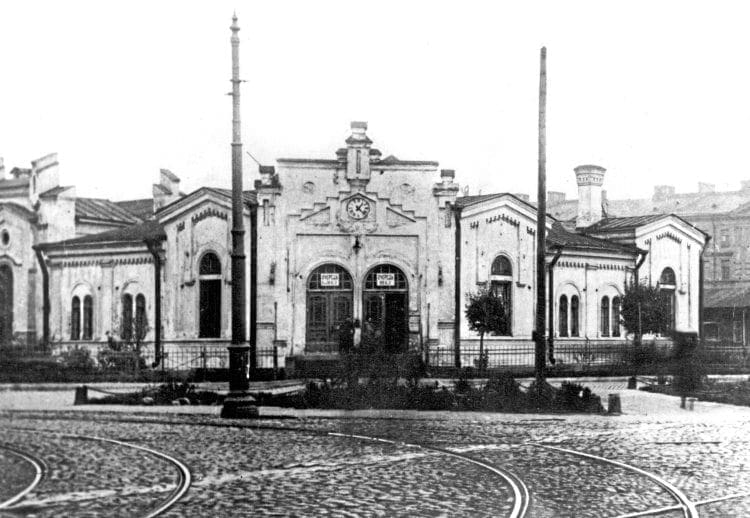
A hectic day was spent in the city, full of meetings with Swedish socialists. Lenin was also reluctantly persuaded to do a little shopping for clothes, and some shoes to replace his hobnailed Swiss mountain boots; he was a man who put little weight upon smartness of dress. However, he refused to meet the black market intermediaries who had liaised with the Germans to set up the sealed train journey, and arrange the ‘Kaiser millions’.
At 6.30pm the party boarded a sleeper train for the start of the 600 mile-long journey to the Finnish frontier, leaving a platform crowded with socialists in almost a party mood. Throughout the night and next day the train sped north through still, frozen pine forests, and reached Haparanda, the border town, that evening.
Records of which locomotives were used on the service trains in Sweden have proved difficult to unearth. However, the Swedish State Railway did employ ‘F’ Class 4-6-2 Pacifics on the Malmö to Stockholm line at that time. These were built by Nydqvist and Holm in Trollhattan, between 1914 and 1916, and are among the largest steam locomotives built in Sweden.
The Swedish Railway Museum in Gävle, Gästrikland, north of Stockholm, has two examples, one of which is believed to be capable of steaming.
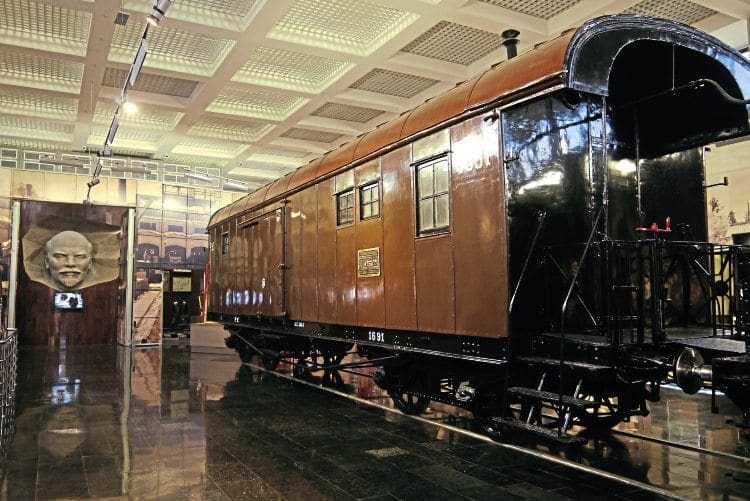
Finland
Finland lay across the broad estuary of the River Torniojoki, crossed by horse-drawn sledges, to reach the border post in the town of Tornio.
At that time the Grand Duchy of Finland was a semi-independent province of Russia.
At Tornio the party was thoroughly searched and interrogated by officials, but no reason could be found to refuse them entry – a great fear of Lenin’s.
The normal service train set off southwards on Easter Sunday evening through more frozen pine forests, and grey brown landscape, south of the snow line. Missing the capital Helsinki, the industrial city of Tampere was the only major settlement it passed through en route to the Russia border proper at Beloostrov in Karelia.
Perched on wooden seats in a ‘hard class’ coach, the party was apprehensive: there might be a troop of Cossacks waiting there to arrest them at the border. However, it wasn’t troops who were waiting for them, the platform was crowded with a large party of jubilant workers from the Sestroretsk munitions plant several miles away. They lifted Lenin shoulder high as he stepped from the carriage, much to his surprise.
Little information is readily available on the Finnish trains used for the Tornio-Beloostrov-
St Petersburg leg of the journey. However, an example, No 293, on which Lenin acted as fireman later that year, has been preserved at the Finland station in St Petersburg. It is a 4-6-0, built at the Richmond Locomotive Works, Richmond Virginia, USA in 1900, and imported for Finnish Railways.
Russia
It was only a relatively short distance from Beloostrov to St Petersburg, and again the party was nervous about what might await them in the Russian capital. Their fears were misplaced.
The three bright lights on the front of the locomotive were the first sign of the train steaming into the St Petersburg’s Finland station seen by the multitude of supporters thronging the platform and choking the streets outside the station. Several soldiers’ guards of honour and a military band were drawn up waiting on the concourse. Again, Comrade Lenin was carried shoulder high along the platform beneath soaring red and gold arches. To believers in the cause it must have been the arrival of the new ‘Saviour’.
While this was the triumphal end of the ‘sealed train’ journey, Lenin’s link with the railway did not end there.
Throughout the remainder of the spring and early summer he organised and agitated against the Provisional Government, until the realisation he had accepted help from the enemy erupted into a storm of protest. Rumours persisted he was a German agent, and there were threats he would be arrested and tried for treason, which started a manhunt for him.
In this febrile atmosphere he went into hiding: however, a decision was taken that it would be safer for him to go to Finland for what was euphemistically called a holiday. Accordingly, he was smuggled across the border near Beloostrov, only to go to ground camping on an island in the middle of a lake.
Eventually the hue and cry died down and it was time to return to St Petersburg, but difficulties were anticipated in recrossing the border back into Russia. This time the plan was for him to replace the fireman on a train, H2 class No 293, in the charge of a sympathetic driver. The real fireman travelled in one of the carriages.
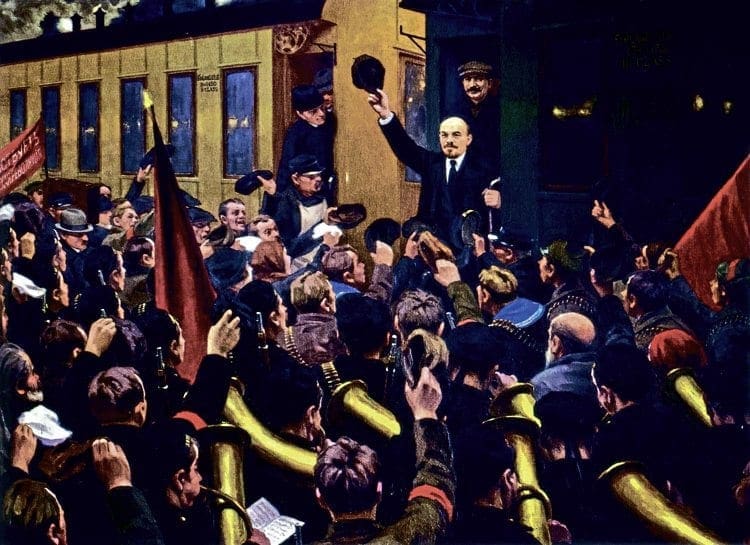
While No. 293 is on display at the Finland station in St Petersburg, there is also a restored locomotive – No. U127 – known as ‘Lenin’s Locomotive’, at the Museum of the Moscow Railway, next to Paveletsky rail terminus in Moscow. It is a ‘U’ class 4-6-0 four-cylinder De Glehn compound, built in 1910 at the Putilov factory in St Petersburg. Its link with Lenin is that it is the engine which hauled his funeral train.
Perhaps the last word should go Winston Churchill, a sworn enemy of Lenin and his revolution: “Full allowance must be made for the desperate tasks to which the German war leaders were already committed… Nevertheless it was with a sense of awe that they turned upon Russia the most grisly of weapons. They transported Lenin in a sealed truck like a plague bacillus from Switzerland to Russia”. ■
Read more News and Features at www.therailwayhub.co.uk/ and also in the April 2020 issue of The Railway Magazine – on sale now!
The Railway Magazine Archive
Access to The Railway Magazine digital archive online, on your computer, tablet, and smartphone. The archive is now complete – with 123 years of back issues available, that’s 140,000 pages of your favourite rail news magazine.
The archive is available to subscribers of The Railway Magazine, and can be purchased as an add-on for just £24 per year. Existing subscribers should click the Add Archive button above, or call 01507 529529 – you will need your subscription details to hand. Follow @railwayarchive on Twitter.



